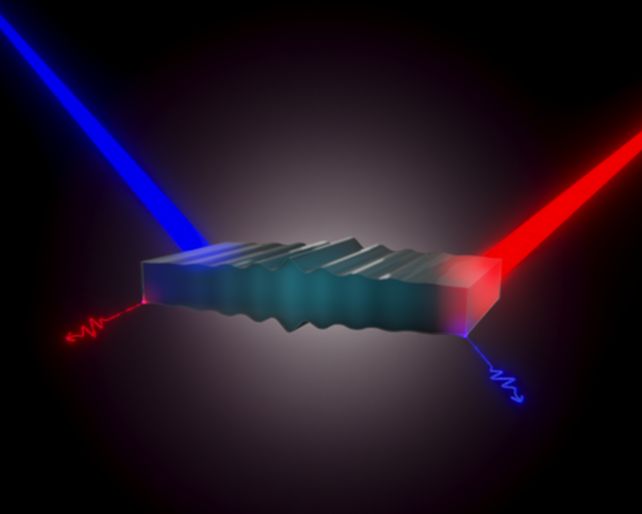Physicists Have Found a Radical New Way to Entangle Light And Sound
The quantum entanglement of particles is now an established art. You take two or more unmeasured particles and correlate them in such a way that their properties blur and mirror each other. Measure one and the other’s corresponding properties lock into place, instantaneously, even when separated by a wide distance.
In new research, physicists have theorized a bold way to change it up by entangling two particles of very different kinds – a unit of light, or a photon, with a phonon, the quantum equivalent of a wave of sound.
Physicists Changlong Zhu, Claudiu Genes, and Birgit Stiller of the Max Planck Institute for the Science of Light in Germany have called their proposed new system optoacoustic entanglement.
This represents a hybrid system using two very different fundamental particles, establishing a form of entanglement that is uniquely resistant to external noise, one of the biggest problems facing quantum technology, making it a significant step towards more robust quantum devices.

Quantum entanglement has promising applications for high-speed quantum communication and quantum computing. The unique physics that define isolated and entangled particles before and after they are measured makes them ideal for a range of uses, from encryption to high-speed algorithms.
But the delicate quantum state required for these processes can be easily broken, a problem that has curtailed its realization in practical applications.
Scientists are working to solve this problem, with some promising pathways. Higher dimensionality reduces the impact of degrading noise, as does adding more particles to the entangled system. It’s very likely that a workable solution will involve more than one pathway, though, so the more options we have, the more likely that the correct combination will be found.
The pathway Zhu and his colleagues investigated involved pairing photons not with other photons, but a ‘particle’ of a different propagation entirely: sound. This is quite tricky to achieve, because photons and phonons travel at different speeds and have different energy levels.

The researchers showed how particles could be entangled by leveraging a process called Brillouin scattering, whereby light is scattered by waves of heat-generated sound vibrations among atoms in a material.
In their proposed solid-state system, the researchers would pulse laser light and acoustic waves into an on-chip, solid-state Brillouin-active waveguide, designed to induce Brillouin scattering. When the two quanta travel along the same photonic structure, the phonon travels at a much slower speed, resulting in the scattering that can entangle particles that carry dramatically different energy levels.
What makes this even more interesting is that it can be achieved at higher temperatures than standard entanglement approaches, bringing entanglement out of the cryogenic zone and potentially reducing the need for expensive, specialized equipment.
It requires further investigation and experimentation, but it’s a promising result, the researchers say.
“The fact that the system operates over a large bandwidth of both optical and acoustic modes,” they write, “brings a new prospect of entanglement with continuum modes with great potential for applications in quantum computation, quantum storage, quantum metrology, quantum teleportation, entanglement-assisted quantum communication, and the exploration of the boundary between classical and quantum worlds.”
The research has been published in Physical Review Letters.
